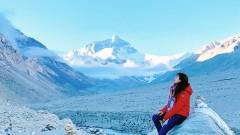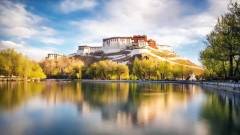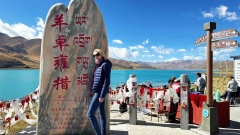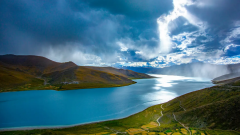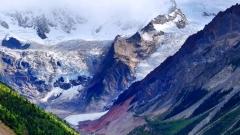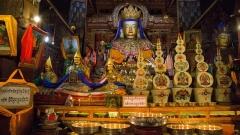In the center of Lhasa’s old town, surrounded by the rhythmic murmurs of pilgrims and the scent of burning juniper, stands Jokhang Temple — the spiritual heart of Tibet. For over 1,300 years, this sacred site has been the destination of countless pilgrimages and the keeper of Tibetan Buddhism’s deepest traditions. To visit Jokhang Temple is to witness the soul of Tibet itself — a place where faith, history, and daily life blend seamlessly.
A Temple Born from a Royal Marriage
The origins of Jokhang Temple date back to the 7th century, during the reign of King Songtsen Gampo, the ruler credited with uniting Tibet. According to legend, the temple was built to house precious Buddhist statues brought by the king’s two wives — Princess Wencheng of China’s Tang Dynasty and Princess Bhrikuti of Nepal.
Each princess brought sacred relics and spiritual wisdom to Tibet, helping spread Buddhism across the region. The most revered of these relics — the Jowo Shakyamuni statue, a golden image of the Buddha said to have been blessed by the Buddha himself — remains enshrined at Jokhang today, making it Tibet’s most sacred object.

Jokhang Temple
Symbolism and Architecture
Jokhang Temple’s design reflects a fusion of Tibetan, Indian, and Nepalese architectural styles, symbolizing the harmony between different cultures and kingdoms.
-
The Layout: The temple faces west, toward Nepal, honoring Princess Bhrikuti’s homeland. Its four-story structure centers around a sunlit courtyard, where monks chant, pilgrims pray, and butter lamps flicker day and night.
-
The Roof: Golden roofs adorned with statues of deer and Dharma wheels symbolize the Buddha’s first teachings at Sarnath.
-
The Interior: Inside, labyrinth-like chapels glow with butter lamps, housing ancient murals, relics, and images of Bodhisattvas.
Walking through its dimly lit corridors, visitors can feel centuries of devotion etched into the walls by generations of Tibetan pilgrims.
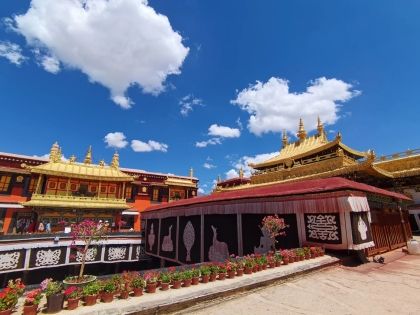
Jokhang Temple
The Pilgrims’ Path: Barkhor Street
Surrounding Jokhang Temple is Barkhor Street, Lhasa’s most famous pilgrimage circuit. From dawn until late at night, hundreds of devotees walk clockwise around the temple — some spinning prayer wheels, others performing full-body prostrations every few steps.
This ritual, known as kora, is one of the most powerful spiritual acts in Tibetan Buddhism. The energy of faith here is palpable — merchants sell prayer beads, monks offer blessings, and travelers join locals in the sacred rhythm of the circle.
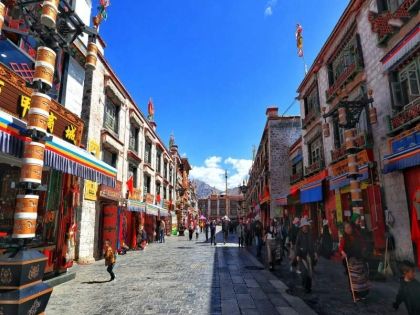
Barkhor Street
The Sacred Jowo Shakyamuni Statue
At the heart of Jokhang lies the Jowo Shakyamuni, a life-sized image of the young Buddha at age 12. Tibetans believe this statue radiates divine power, capable of granting blessings and healing.
Pilgrims from all over Tibet travel for months, even years, to bow before it — often weeping with emotion when they finally arrive. The Jowo is considered so sacred that during historical crises, it was hidden to protect it from harm. To this day, the statue remains the most venerated object in Tibet.
Festivals and Spiritual Life
Jokhang Temple plays a central role in many Tibetan festivals, especially the Great Prayer Festival (Monlam Chenmo) held during the first month of the Tibetan calendar. During this time:
-
Thousands of monks gather in Jokhang’s courtyard to chant sutras and debate philosophy.
-
The temple’s golden roofs are decorated with prayer flags and banners.
-
Pilgrims flood Lhasa, filling the air with prayers and devotion.
Visiting during this festival offers travelers a rare window into the living heart of Tibetan faith and community.
Jokhang Temple Today
Despite centuries of change, Jokhang Temple continues to be a vital part of Tibetan life. It was listed as a UNESCO World Heritage Site in 2000 as an extension of the Potala Palace complex.
Today, it remains a place of daily worship, drawing both Tibetan pilgrims and international visitors. The temple is also a center for Buddhist learning, where monks study scripture and meditation.
While modernization has transformed Lhasa, the spirit within Jokhang’s walls remains timeless — a constant reminder that Tibet’s true beauty lies in its living faith.
Visiting Tips for Travelers
If you plan to visit Jokhang Temple:
-
Best Time: Early morning or late afternoon, when pilgrims gather and the light creates a golden glow over the temple’s rooftops.
-
Etiquette: Dress modestly, remove hats inside, and walk clockwise around the temple. Photography may be restricted in some chapels.
-
Don’t Miss: Climb to the rooftop for panoramic views of Lhasa and the Potala Palace.
-
Nearby: Explore Barkhor Street’s markets for prayer wheels, thangka paintings, and Tibetan incense.
Conclusion
Jokhang Temple is more than just a historic monument — it’s the beating heart of Tibetan Buddhism. Every chant, butter lamp, and kora around its sacred grounds tells the story of a people whose faith has endured through centuries.
For travelers seeking to understand Tibet’s soul, a visit to Jokhang Temple is essential — a journey not just through architecture or religion, but into the living spirit of a nation.
For more cultural and spiritual travel experiences in Tibet, visit China Dragon Travel to plan your journey through the Roof of the World.





